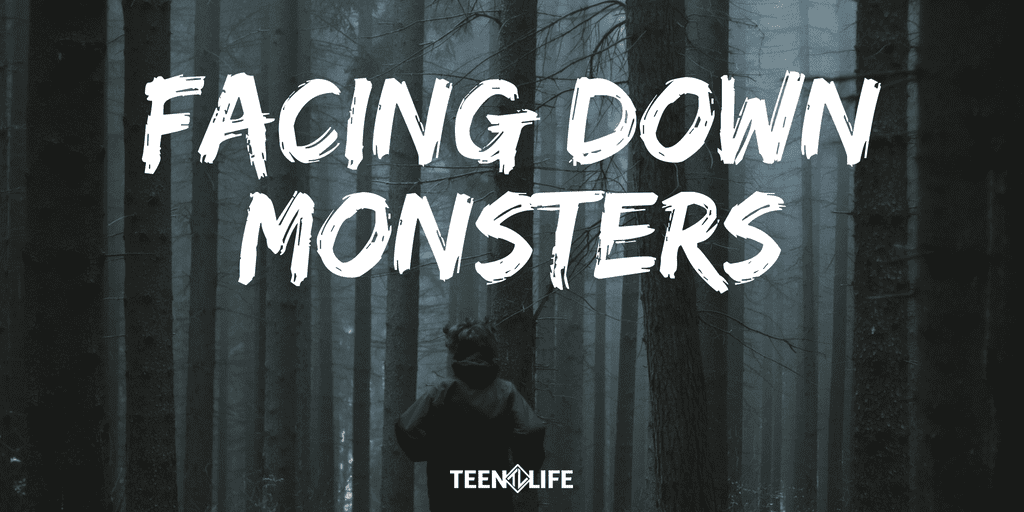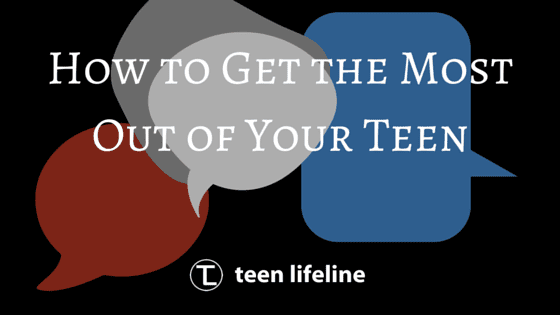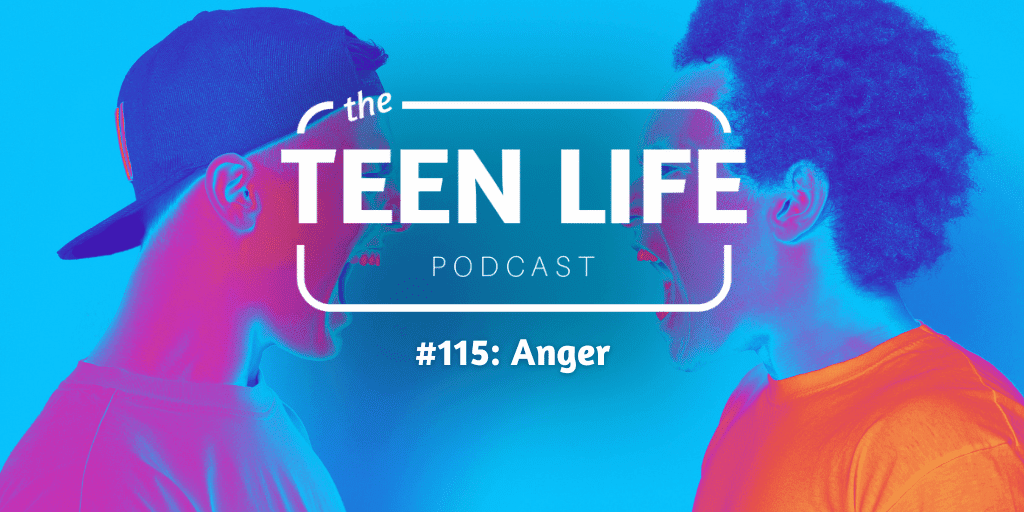
by Shelbie Fowler | Jun 7, 2018 | Mental Health, Parenting
“‘Stories don’t always have happy endings.’
This stopped him. Because they didn’t, did they? That’s one thing the monster had definitely taught him. Stories were wild, wild animals and went off in directions you couldn’t expect.”
~ A Monster Calls, Patrick Ness
A Monster Calls is a book and movie that is beautiful and devastating all at once. It is about a 13-year-old boy, Connor, with a mother who is battling cancer. This story is told from Connor’s perspective when he begins to have nightmares about a ‘monster’ visiting him and telling him parable-like stories that make him reconsider all he has been taught. This story, while fictional, paints a perfect picture of what happens when trusted adults cause a negative effect in a serious situation faced by a teen.
We attempt to protect teens from pain.
The biggest issue within this story is that no one ever explains to Connor how serious his mother’s illness is, even after she is hospitalized. There are hints at multiple visits to the hospital, her hair loss, scenes of Connor doing chores and making meals, but no one ever tells him what is happening. Why is this? The adults are attempting to protect Connor by keeping him out of the loop. They are wanting him to continue to live his life as if nothing is changing. This is incredibly damaging because it just leaves him confused and worried without knowing why. The ‘monster’ that Connor begins to dream about, helps him to start understanding what is happening in a way that the adults refuse to.
In the story, Connor begins experiencing bullying and becomes angry. His actions are shouting out for help but the adults do not respond. This happens often with our teens. Adults are not always aware of the signs of an emotional disturbance. Very rarely do we ask the victim of bullying why they decided to fight back. Very rarely do we have an opportunity to genuinely ask what is happening at home. Very rarely do teens innately understand how to deal with serious situations on their own. Very rarely do teens have the words to ask for our help. These are situations in which we, as adults, should be asking questions to help teens process their actions and emotions in order for them to begin healing from stressful events.
We attempt to say the right things.
As the story is told, Connor’s father attempts to offer words to support him. I say the word ‘attempt’ because what is said hurts Connor in multiple ways. Connor’s father has a second family and lives in another country. When the father meets with Connor, he tells his 13-year-old son, to ‘be strong’. When I first read this part of the story, I was reminded of any time when I had been told this or something similar. These words, while sounding nice, would make me feel angry and hurt. These sentiments come from good intentions but end up causing more harm.
Telling a teen struggling with a ‘monster’ to “be strong”, “it will get better”, or “others have suffered more”, etc., creates a space where teens become more confused by what they are feeling. Teens who are experiencing a difficult time should not have to be strong. We cannot guarantee that things will be better. We should not compare suffering. There are ways to provide support without causing damage. We can do this by simply being there and allowing emotions to be felt in the moment. We can acknowledge that we do not know how a teen is feeling and state, “I am so sorry for what happened.” We can offer to do something specific that they enjoy doing and not make the situation about ourselves. These acts can do more to show support than any others.
We should attempt to face down the monsters together.
The positive side of A Monster Calls is when Connor finally understands that this world full of stories that rarely have black and white endings. He understands that the line between good and evil can be blurred, that not all the good guys get to win in the end, and sometimes the bad guys do win. He begins to understand that suffering is a part of his life story.
Teens already face an emotional upheaval almost on a daily basis thanks to the level of brain development that is taking place and an increase in hormones. The thing is, we are all emotional creatures; adults just hide it better. The world can seem overwhelming to a teen. This becomes especially true when that teen is facing a life changing event. When a teen is struggling to face down their monster, they should be given space to get angry, to cry, to be held. They do not know what they need, but we can be there to help them understand how to deal with the ‘monsters’ in their lives. We all have stories that do not have happy endings. We get angry, sad, mad, and there is nothing wrong with that. This is why teens need reassurances to feel what they need to feel because not every story ends happily but every story lived is important.
Here is a review from another professional about how this book has helped patients of all ages:
http://www.dailymail.co.uk/health/article-2200270/A-Monster-Calls-The-heartbreaking-childrens-book-cancer-adult-read.html#ixzz57xwvMWq2
Shelbie Fowler is currently a volunteer for Teen Life and has her Masters in Family Studies. She is passionate about being an advocate for family life education in order to grow families stronger.

by Ricky Lewis | Feb 11, 2016 | Parenting
I have worked with teenagers now for over a decade. In that time, there have been significant changes in environment, social interaction, and educational expectations, but one thing has remained. Teenagers generally don’t feel they can talk to their parents.
I’m coming from a place where I sit in groups with teenagers who are strangers to me and within 30 minutes of talking to them can get them to share who the most important person in their life is and why. I’m writing this not as the parent of a teen but as someone who works with teens, so this is also for any youth worker that wants their conversation to get better. I’m hopeful that this helps you, and I’m also hopeful it helps me as I start to create an environment for conversation with my elementary school kids that will carry into their teen years – because we all know if I wait, it’ll only get harder.
In fact, today I was sitting in a group that has been meeting sporadically for about 12 weeks. One of the students brought up the difficulty she is having talking to her dad. There are lots of things involved with this situation, but I believe if her dad read these tips, he could learn so much more about his own daughter.
With that in mind here are the tips I have found to be helpful, and I hope you can apply to your relationship with your teen as well.
Talk less.
As a parent, it is difficult not to fill the silence. Resist this urge. In our training for group facilitators, we teach that counting to at least 10 (counting to 30 is better) when silence begins can help us wait long enough before assuming the other person is done talking. With kids, they are often just processing out loud, something most adults have decided needs to be internally. For them, it is normal to say out loud what they are thinking because they are trying it out. Let them. The fact is, they will become uncomfortable too and will likely say something else to fill the silence.
Really listen.
Deciding at the beginning of a conversation this is about them, puts you in a position of listening rather then looking for what is wrong and correcting, or even worse, that there is a problem when none actually exists. Listen just to hear, listen to learn, listen to be able to repeat back. Make an intentional decision to not be thinking about how to answer or how to tell them what they should be thinking or doing instead. There is a stage of life for that, but it should mainly apply to kids under 9 years old.
Ask great questions.
You can decide to do the others, but asking good questions is a skill – asking questions that invite more information, that don’t put them on the defensive and that show empathy are key and vital to getting the most out of your teen. Here are some suggestions to get you thinking:
- What bothered you about feeling that way?
- Have you ever thought that before?
- What do you think will happen if you do that?
- How do you think this might affect your future (or those around you)?
These are just some ideas to get you thinking, but the point here is to ask open-ended, inviting questions without making assumptions or projecting your bias onto the student you are working with.
Don’t correct unless safety is a concern.
This is so hard because we as parents tend to think that this is our full time job, or maybe that’s just me. It is easy to feel that if we don’t correct or advise in a situation with a kid, we are depriving them of a learning opportunity or wasting a teachable moment. What if the teachable moment happened without us saying anything? As I mentioned above, at this age, kids are trying things out. Allowing this in a safe way actually helps them learn better.
Here’s how I would suggest using this…
Simply decide to allow a whole conversation to happen without correcting, unless it is something dangerous. It will be hard, but do it. Decide to do this on a regular basis, but you have to realize how often that makes sense – once a week, twice a month, 5 days a week. Whatever it is, allow your conversation to be driven by your child or the teen you’re working with without any advice or correcting on your part (don’t worry too much, the odds of having the same conversation again are good). The value you will gain by doing this will open doors you never knew existed as they feel more comfortable sharing because they won’t feel so judged.
Create a safe environment.
One of the best things I have ever heard was a story about a father who told his kids that the old truck sitting out by the barn that didn’t run was a “safe zone.” It was the one place they could have conversations and tell him anything without any punishment. Consequences sometimes are unavoidable but he committed to no punishment. They knew that anytime they needed to tell something they feared they would be grounded for or worse, their cell phone would get taken away, they could tell him in that old truck.
You can do this too. Declare a safe zone in or around your house. At our house, right now, it is simply that my kids can tell me, “I need to tell you something but I don’t want to get in trouble for it.” I have given them permission to share anything because I would rather be in the loop than be seen as the enemy when it comes to decisions that affect character and life lessons my kids experience.
Reassure them about everything.
This is an extension of the listening tip. If you really are listening, you will hear opportunities to come back to and reassure them that you are there for them. A simple recognition of their interest or a question about a relationship they told you about can help them know that you truly care. This isn’t about you, so you can’t measure this based on how many times you think is enough. You have to keep reassuring until they tell you to stop or until that season has passed and it is no longer an issue.
If you work with teens, knowing how to get more out of conversations is vital to their success. Maybe you have some better ideas. Take a minute to share them below. We love hearing from you and learning together.
Ricky Lewis is our Executive Director and has been with us since the beginning. As a father of 4, he seeks to help parents and their kids Live Life Better.














